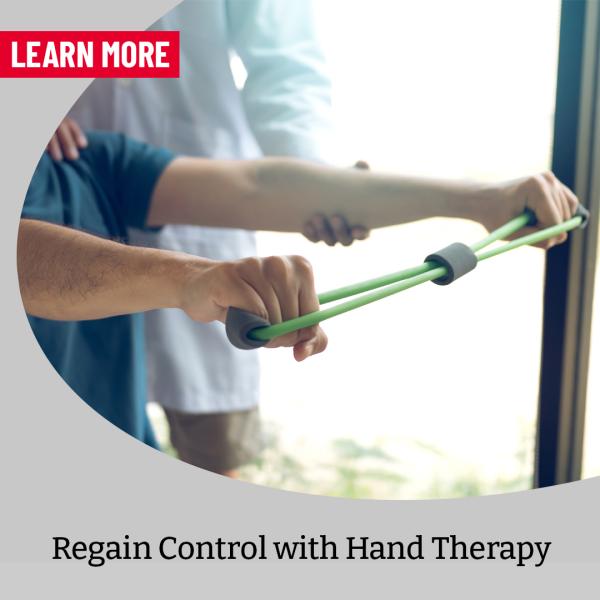
Reviewed and contributions made by Occupational Therapist Kevin Amarantos, OTR/L, C/PAM
At ATI, we are proud to offer Hand Therapy as one of our specialty services. Our clinics' physical therapists [PT] and occupational therapy practitioners [OTP] fulfill these roles, helping our patients rehabilitate and strengthen their hands and upper extremities for everyday use.
During the first week in June, we celebrate Hand Therapy Week. While we want to take the time to recognize our PTs and OTPs for their work, we also want our potential patients and their families to know how Hand Therapy can help them regain control of their life.
Get Your Free Physical Therapy Screening
Not sure where to start with physical therapy? Get a free screening and let us help you start the path to recovery today.
Get My Complimentary Screening
What is Hand Therapy?
Hand therapy works to improve the functional use of the patient's upper extremities. This means our therapists treat hand, wrist, elbow, and shoulder conditions. In addition, hand therapists use various techniques to strengthen and help restore patients' function.
What will a hand therapist do?
Many of ATI's hand therapists are Certified Hand Therapists [CHT]. To become a CHT, a hand therapist must have practiced for at least three years. They must also have had a minimum of 4,000 hours of treatment, focusing specifically on hand and upper extremity disorders. Additionally, CHTs are also required to pass a rigorous examination.
As a result of their training, our therapists are well-equipped to assist and will provide you with the following:
- Accurate assessments
- Personalized treatment plans
- Rehabilitative care, both preventative and post-operative
What are the treatment techniques for hand therapy?
Hand therapists utilize a variety of techniques and approaches to assist their patients. But what your therapist chooses for you depends on your symptoms and needs. Each one of our patient's cases is unique, and for that reason, their care plan is too.
Therapeutic interventions may include preventative/non-operative conservative treatment or post-operative rehabilitation. In both instances, your hand therapist provides exercises and activities to improve the functional use of your hand and upper extremity. Exercises used by your Hand therapist may include, but are not limited to:
- Comprehensive exercises to restore strength and mobility
- Activities using tools (e.g., weights and putty) or using everyday objects (e.g., buttons, clothespins, or coins) to help restore function, fine motor control, and manual dexterity
- Custom fabricated orthoses may be used to protect injured structures/surgical repairs, reduce pain symptoms and allow structures to heal, or even improve flexibility
- Manual therapy to address edema, scar tissue, or soft tissue restrictions
Whatever your reason for visiting a hand therapist, their primary goal is to restore function and develop modifications. They want to help you engage with your everyday world.
What are the common injuries and conditions for hand therapy?
Our Hand Therapists are trained to evaluate and treat complex upper extremity cases in the hand, wrist, elbow, and shoulder, including:
- Soft tissue sprains and strains
- Fractures of the upper extremity
- Arthritic/degenerative joint disease
- Rotator cuff injuries and other shoulder pathologies
- Compression-based and traumatic peripheral nerve injuries, such as carpal tunnel and cubital tunnel
- Multiple trauma injuries
- Wound care
- Scar management
- Tendon lacerations and repairs
- Amputations and re-plantations
- Overuse tendinopathies
Regain function in work and life
Our PTs and OTPs are eager to assist you with the social, emotional, and functional components related to everyone they treat. Their goal is to restore function, so you can return to work and play. Learn more about Hand Therapy or find a nearby clinic and start on the path towards recovery today.
